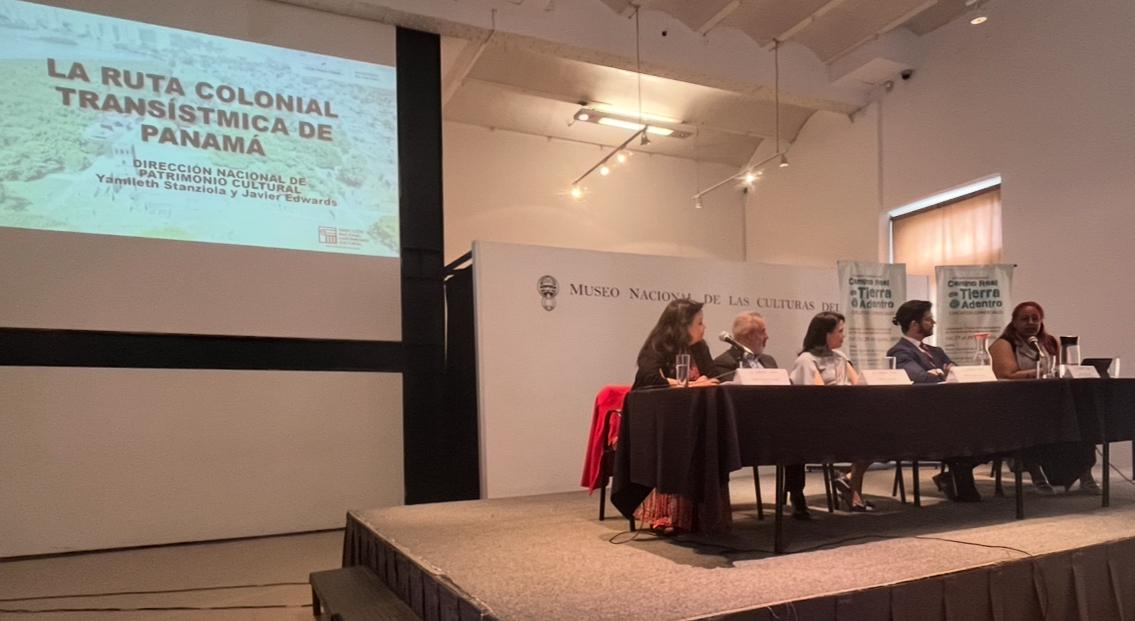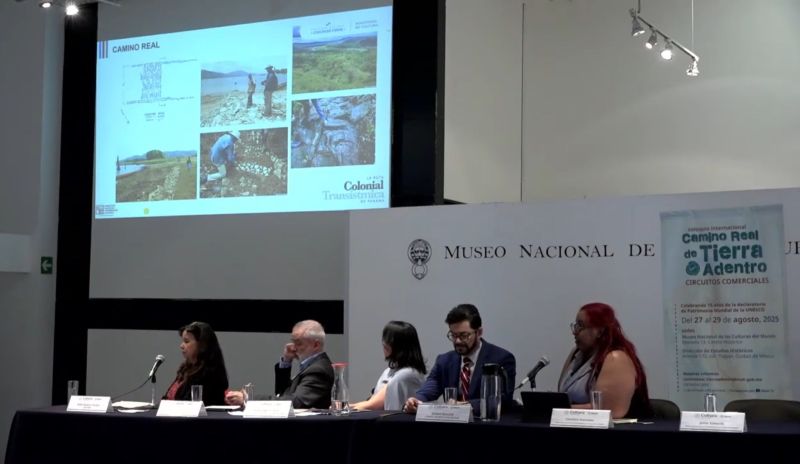The 2025 edition of the international colloquium on cultural routes "Royal Road of the Interior" concludes successfully

From August 27th to 29th, the Camino Real de Tierra Adentro International Colloquium was held, this time dedicated to the topic of “Commercial Circuits”. The event, organized by the National Institute of Anthropology and History (INAH) through the Directorate of Historical Studies in collaboration with the Regional Institute of World Heritage in Zacatecas Center Category 2 under the Auspices of UNESCO, took place in Mexico City with activities that took place both at the headquarters of the DEH-INAH and at the National Museum of World Cultures, where seven roundtable discussions were held, in which 27 papers were presented by specialists from Panama, Spain and Mexico.

During the first day, Jordi Tresserras (Spain), UNESCO specialist, shared a vision related to the experiences and challenges involved in the management and safeguarding of cultural routes and itineraries inscribed on the UNESCO World Heritage List. Projects such as the Cultural Itineraries in America promoted by the European Union and its pilot program in Panama by María Isabel Arroche (Panama) were presented, as well as experiences surrounding other routes and itineraries around the world such as the route of the missions of Pimería Alta Sonora and Arizona presented by Rafael Barceló (Mexico), as well as the Trans-Isthmus Colonial Route of Panama inscribed on the List last July, whose experience for the nomination process before the UNESCO World Heritage Committee was shared by Yamileth Stanziola, National Director of Cultural Heritage of Panama.

In this context, a panel was dedicated to the Cultural Itinerary of the Camino Real de Tierra Adentro 15 years after its inscription on the World Heritage List, in which José Luis Perea González (INAH), Carlos Tejada (UNESCO Representation in Mexico) and Carlos Augusto Torres (RWHIZ – CC2 UNESCO) reported on the actions that have been carried out during this period for its safeguarding, management and dissemination, and a space was opened for analysis around the challenges and priorities that the management of this World Heritage Property envisions in the future, highlighting highly topical and complex aspects such as inclusive community development, governance and sustainable tourism, among others.

During the remaining two days, prominent academics, researchers and specialists from the INAH presented recent research, registration, cataloging, conservation and dissemination work on what, for more than 300 years, was the most important commercial, cultural and religious route in New Spain.

